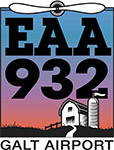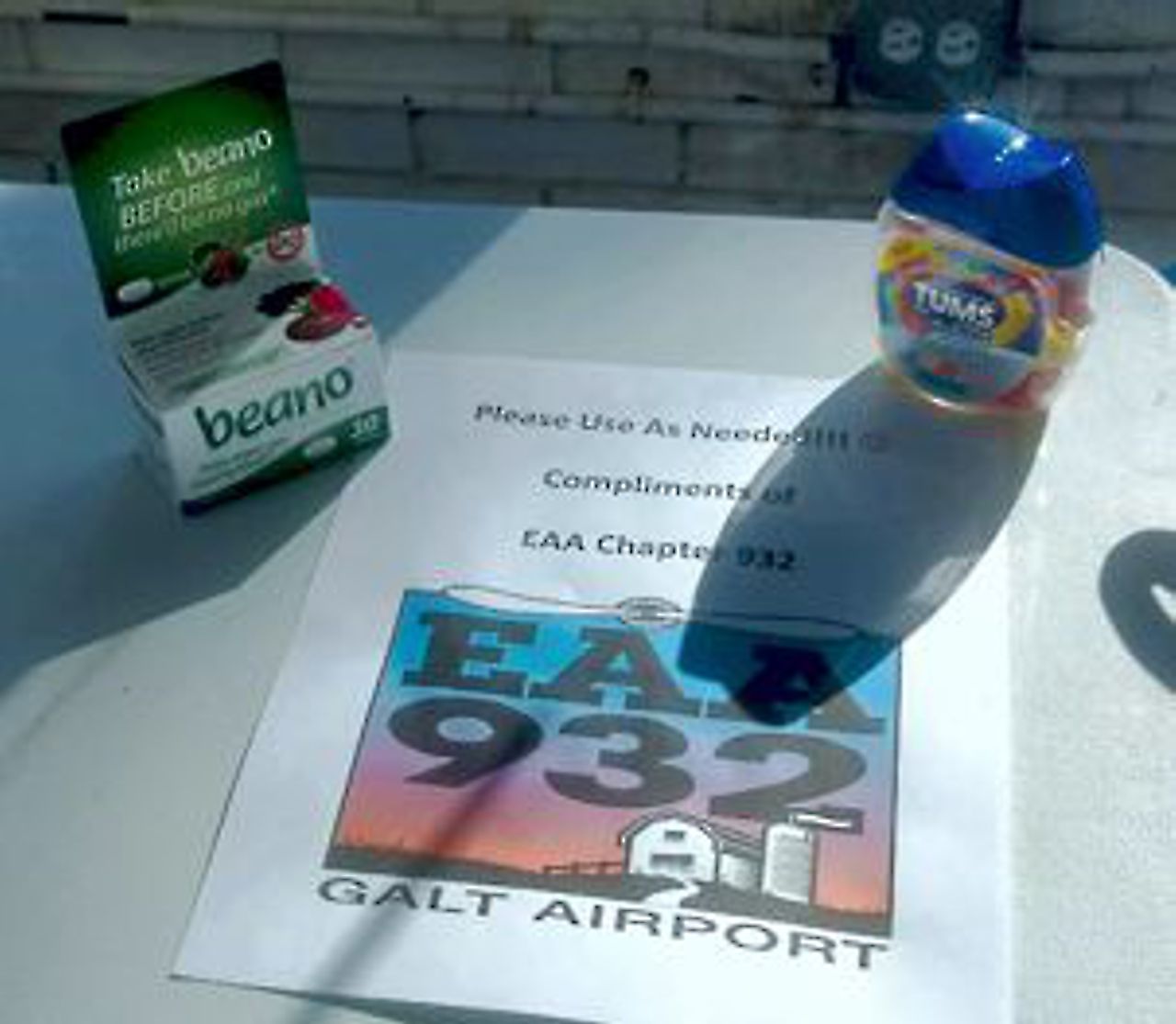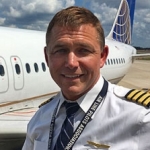Bridging the Gap
The Evolution of Flight Training

On July 20, 2007, the FAA issued Advisory Circular 91-78. It states that pilots can replace paper charts with an EFB (Electronic Flight Bag – FAA-speak for tablets running flight management apps) for most part 91 operations as long as the application and chart data is kept up to date. It recommends that you carry a backup source of data, like a 2nd tablet or phone or paper charts.
Today, tablets running EFB applications (i.e. ForeFlight, FlyQ, Garmin Pilot and others) are common in cockpits. However, students wanting to become proficient with EFB are hard pressed to find a CFI that will not only teach them how to use an EFB, but also how to manage their use in the cockpit.
A few months ago, Justin Cleland, co-owner of JB Aviation and Mike Nowakowski, CFII and the Chief Flight Instructor at JB Aviation’s Flight School at Galt Airport, sat down to update the school’s syllabus.
Mike recalls, “Justin and I sat in development and discussed what we’re going to put in the syllabus. We added items, and then we stepped back and asked, ‘Well, wait a minute… is this relevant anymore?’”
The concepts still apply, but the methods were outdated.
Justin agreed, “We struggled with that. We want to teach what’s going to help you in the air, the things that are going to make you a better pilot.”
Teletype limitations required coded weather reports. He asked, “How does that make someone a better pilot? Instead of spending an hour translating NOTAMs and METARs with a student asking, ‘What does this mean, what does that mean,’ and ‘I don’t understand that,’ we read the decoded weather briefings and ask more meaningful questions. The student is learning something important for the next hour. That’s a huge advantage.”
“There’s a sense that you’re not a good pilot if you don’t do things the way you were taught years ago.” Justin added, “That’s not the way it works. Technology moves forward!”
Transitioning from the PTS and adopting the ACS required a seismic shift in preparing students for their checkride. The ACS teaches “single pilot cockpit resource management.” A skills gap can exist between flight instructors and students, who come in expecting to learn how to use an iPad in the cockpit.
Mike says, “As a flight school, we have to answer that, otherwise we’re not going to be in this business for long. Some instructors feel they’re just here to teach you how to fly, not how to use a tablet in an airplane. We don’t agree with that mentality.”
Justin recalled flights with students as a CFI, “We’d be on our way to Monroe and we’d tell them something has happened and we’re going to divert to Beloit. We’d ask, ‘How many miles is it to Beloit?’ Well, four minutes later after looking at their sectional and we’re already passing Beloit, the student would say, ‘Seven miles. We’ll be there in seven miles.’ That question is fair game on a Checkride. Now, they can just grab that magenta line in ForeFlight, drop it over Beloit and say, ‘Four minutes and twenty-two seconds.’ That frees us up as instructors to do more, to provide more complicated scenarios and add more depth to the training.”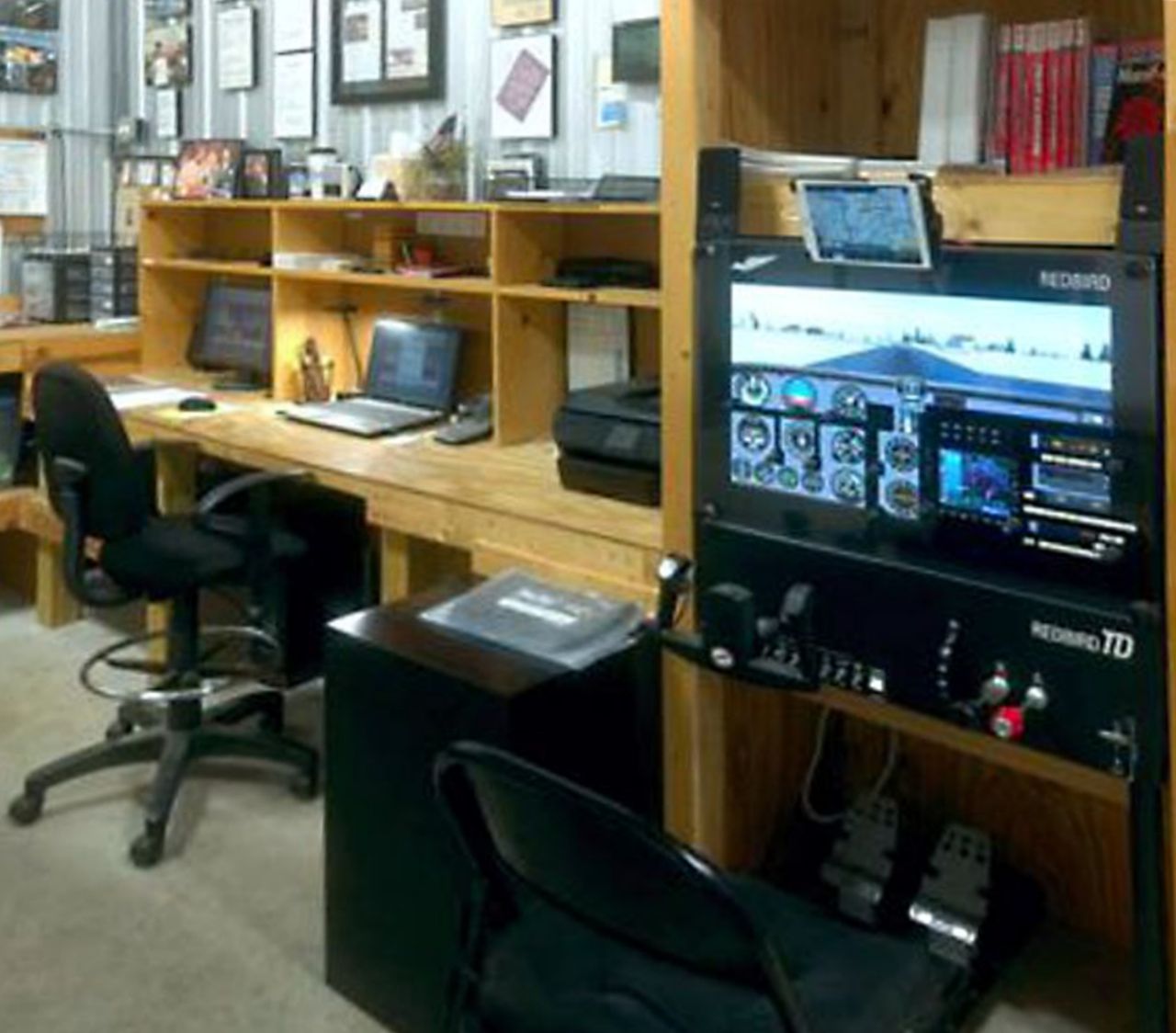
The EFB reduces the workload, improving the safety and efficiency of a flight so the pilot can concentrate on the flying.
“When I get into an airplane now, I have ForeFlight connected to my headset and my ADS-B transponder. It’s a 3-dimensional volume of continuously updated, live information: weather, traffic, TFR’s, runway closures, winds aloft, even fuel prices. It’s like having a co-pilot!”
“It’s talking to me, telling me I’m 10 miles out and what the AWOS frequency is, what the CTAF frequency is. It’s telling me when to set up for a 45-degree entry into the left downwind for the runway I’m going to use. It’s calling out a 10 mile final, 8 mile final, 6 mile final. Live traffic is pictured on my iPad and it’s telling me about it, audibly!”
He exclaimed, “You can’t tell me we should disregard those amazing benefits just to use a manual E6B and a paper sectional.”
But they knew it can prove distracting too. And they had concerns about the potential for an EFB to make a pilot lazy. When students are taught to use it correctly, they agree that it can make for a more situationally aware, safer pilot. They wanted to close that skills gap. The flight school needed to add EFB expertise on the team. Fortunately, that expert had an airplane and hangar right there at Galt.
Ron Friend is an Advanced Ground Instructor, and a ForeFlight guru. He joined the discussions. They talked about how to incorporate ever-evolving EFB systems into the flight training syllabus.
Intro to ForeFlight, Ron’s first class, has been added to the syllabus. He uses a foundational approach that includes how to enter pilot and aircraft information, how to do a weight and balance computation, and basic flight planning.
Ron said. “You still have to populate ForeFlight with specific information from the POH before you leave the ground.”
They decided to not allow students to use an EFB in the cockpit until they can prove to the instructor they can fly from Point A to Point B with a chart in their lap.
A DPE might not ask you to use a manual E6B, but you will probably be asked how and where ForeFlight got the performance information to do its calculations.
But a student learning just how to use an EFB won’t know anything about magnetic variation! That’s a built-in function of ForeFlight. You don’t want to get in the airplane with a DPE and have him or her ask why you decided to fly at 4,500 feet, with your only reply being “Because ForeFlight told me to.
“You still have to know the concepts,” Justin said. “As my math teacher used to say, ‘I want to see your work.’”
Ron created a second ForeFlight class titled, How’d it Go? He teaches it after a student has used ForeFlight in the cockpit and has had a taste of what it’s like to be a little overwhelmed by the information it provides.
A section of Ron’s hangar is set up as a classroom, complete with a large screen monitor and a Redbird simulator. Ron said, “I can take the iPad out of an airplane, mount it on my simulator, turn it on, and there’s no difference in ForeFlight between the plane and the simulator.”
“The new generation of students is very comfortable with the technology, and we want to bring them in. That’s the future. The tools are already being used. JB Aviation teaches students to use them effectively.”
Mike added, “We don’t just want to make better pilots, we want to make safer pilots.”

“Checkrides and Chili” Connects!
Weather-wise, it would have been a great day to be airborne. However, for those of us who remained earthbound and attended EAA932’s Checkrides and Chili event at the Galt studio on Saturday morning, November 10th, it was a rare opportunity to get a glimpse into the mind of a Designated Pilot Examiner (DPE). Top that off with the chance to taste eight different chilies cooked up by our members in an informal chili cook-off, and you have the makings of a superb day at the airport!
One of our own, DPE Dave Monroe, is a familiar face at Galt. Dave grew up in an aviation family and is an instructor, a Captain and Check Airman for American Airlines, and a seasoned air show performer. Most days off, you can find Dave at his Galt hangar or at a nearby FBO giving checkrides. Dave is one of 11 DPE’s that serve the Great Lakes Region. All undergo frequent training and checks by the FAA.
Chapter President, Arnie Quast, moderated the gathering. He introduced Dave as a “real person” rather than a hard-nosed inquisitor that students often picture. Arnie stated that the best time to meet your flight examiner is not on the day of your test, but to become acquainted earlier.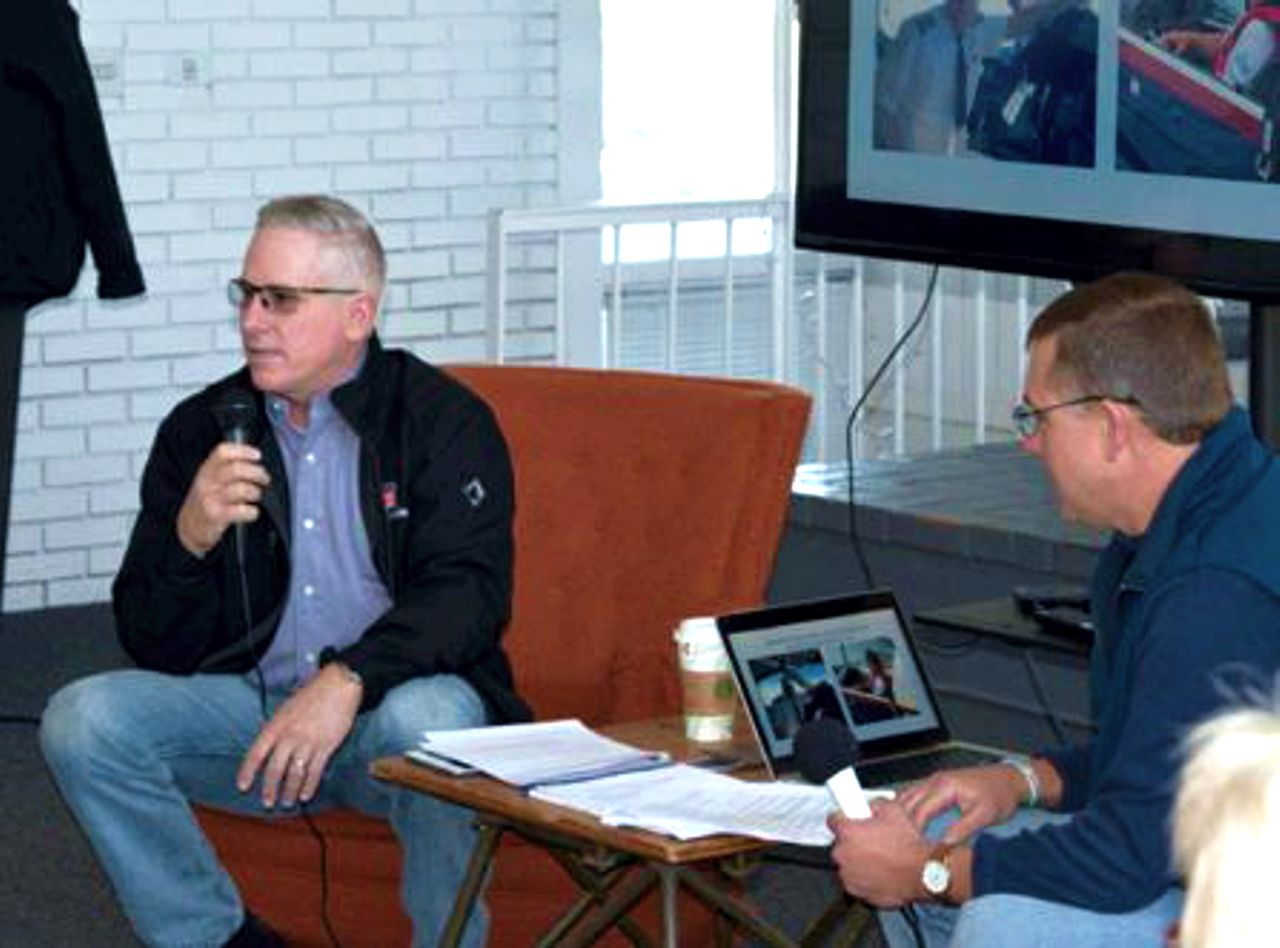
As the morning progressed, Dave fielded a wide range of questions from the moderator and guests. A 4-page information packet was available for all attendees. It included a list of everything that an applicant needs to bring to a checkride including all necessary paperwork.
Part of the discussion was devoted to the difference between the Airman Certification Standards (ACS) and the old Practical Test Standards (PTS). Whereas the PTS required a more rote memorization of items, the ACS is a scenario-based method of training. Every DPE is allowed to develop their own “plan of action” for presenting students with scenarios that allow them to demonstrate their knowledge, risk assessment skills and proficiency during a checkride.
Dave prefers to “break the ice” with an informal discussion and free-flowing conversation about aviation interests to relax apprehensive applicants. He said the exam is an open-book test; not about knowing every answer but knowing where to find the answer. He recommends against guessing for an answer. If you have the resources to look it up, do so. Things like airspace indications are readily available on the legend of a sectional chart. Use it! People who bring their AIM and FAR books with key points highlighted and Post-It notes sticking out of specific pages, are indications that they are well prepared for the oral part of the exam. All of the specific knowledge you need is in the ACS. You shouldn’t have any surprises. The DPE is not going to ask you a “gotcha” question.
In response to a question about whether a person needs to bring sectional charts and their E6B or if they can use an EFB (Electronic Flight Bag), the FAA’s designation for an electronic information management device, such as an iPad. Dave declared, “It’s there. We can all use it. You can bring that on your checkride and it’s perfectly legal to use.” He encourages its use with one caveat: “Make sure you know how to use it, make sure that the chart data is current, make sure you can find the altitudes of the airspace you’re looking at.” Dave did state that an application like ForeFlight can not be the primary means of navigation for the checkride. The first portion of the checkride will be pilotage and dead reckoning. “I need to know you can fly off a sectional or an electronic chart.” If you’re going to bring a tablet, make sure you’re able to use it well, and make sure you have a Plan B in case it goes dead. Dave noted that a Plan B can be a second iPad or a phone that’s running an EFB app.
Someone asked if a manual E6B or whizwheel is required. Dave replied that an electronic E6B calculator or an E6B app on your iPad is acceptable. “However you facilitate a correct answer is legal.”
Dave said the most common area where students struggle are with aircraft performance questions: things like how weather affects climb, true airspeed versus indicated airspeed, how to find the local air pressure and figuring out pressure altitude, airspace and cloud requirements, solving a landing performance problem, or finding the true airspeed for a specific portion of your cross-country flight.
“If someone can find an answer in the AIM, I’m happy with that.” Of course, every scenario has things you need to know without having to look them up. Dave also stressed knowing how to use all of the equipment in the airplane you bring to the test. “Don’t come to an exam with an airplane you’re not completely familiar with.”

He also stated that, “Checkrides always go better when you talk thru what you’re doing. From preflight to flying the cross-country, saying things like ‘my next checkpoint is going to be here,’ and ‘we’ve got a tailwind, so we’re going to be early,’ means there are fewer questions I need to ask.”
Dave reminded us that on the day of the exam, you are the pilot-in-command. He is not along as an instructor. Instead, he’s there as an evaluator and your first passenger. If he points out occasional traffic, as you might ask a passenger to do, that’s not a concern. But, if he has to take control of the aircraft, that would indicate a failure and he will inform you of that fact at the time. If that happens, you could choose to continue the checkride and complete the rest of the exam. Be aware that the ACS does not allow the DPE to re-examine a badly done maneuver during the exam. You can’t ask for a do-over. If something proves unsatisfactory, the DPE can come back after you’ve had additional training and been signed-off by your instructor, and re-examine you on the portion you had problems with.
Sometimes an applicant has completed the oral portion of the exam only to find that the winds have picked up the crosswind may be beyond their abilities. Dave said to remember that you are the pilot-in-command and need to make the go or no-go decision when conditions exceed your personal minimums. In that case, you can request to cancel the remainder of the exam. The examiner will issue a “letter of discontinuance” that states you have successfully completed the oral portion of the exam The FAA allows 60 days to complete the practical portion.
Dave recommends, “Take your time. Don’t rush. Follow the checklists. Be methodical.” He added, “When it comes to decision making, always err on the conservative side and you’ll do well.”
At the close of the discussion, Arnie offered the following advice that will benefit any checkride candidate: perform to the ACS standards, exhibit safe flying skills and above all, don’t scare the examiner!
Member Profile
The Kocken Family
Our family joined EAA932 in Spring of 2017, after a long hiatus from General Aviation. Having grown up in Northeast Wisconsin, Rich attended AirVenture nearly every year since age 6. Currently Rich is a Captain and Check Airmen on the Airbus 320 for United Airlines. Aviation is also a passion in Sharon’s life, as she is currently a Flight Attendant for United. Son Chase has helped draw Dad back into GA with his strong desire to fly with anyone who will take him up.
The family has a share of a Piper Archer II based at Galt, which we acquired this year with a great group of friends. Rich has also recommitted to reinstate his CFI certificates which he had regrettably allowed to expire so many years earlier.
Our family is excited about volunteering and staying engaged with our new extended family here at EAA932. We couldn’t be any happier here at Galt, joining EAA932, with a fantastic group of aviation enthusiasts committed to promote and educate the aviation community.
Rich and Sharon Kocken, sons Mitch (age 17), Chase (age 14) and Quinn (almost age 1!!)
News from JB Aviation
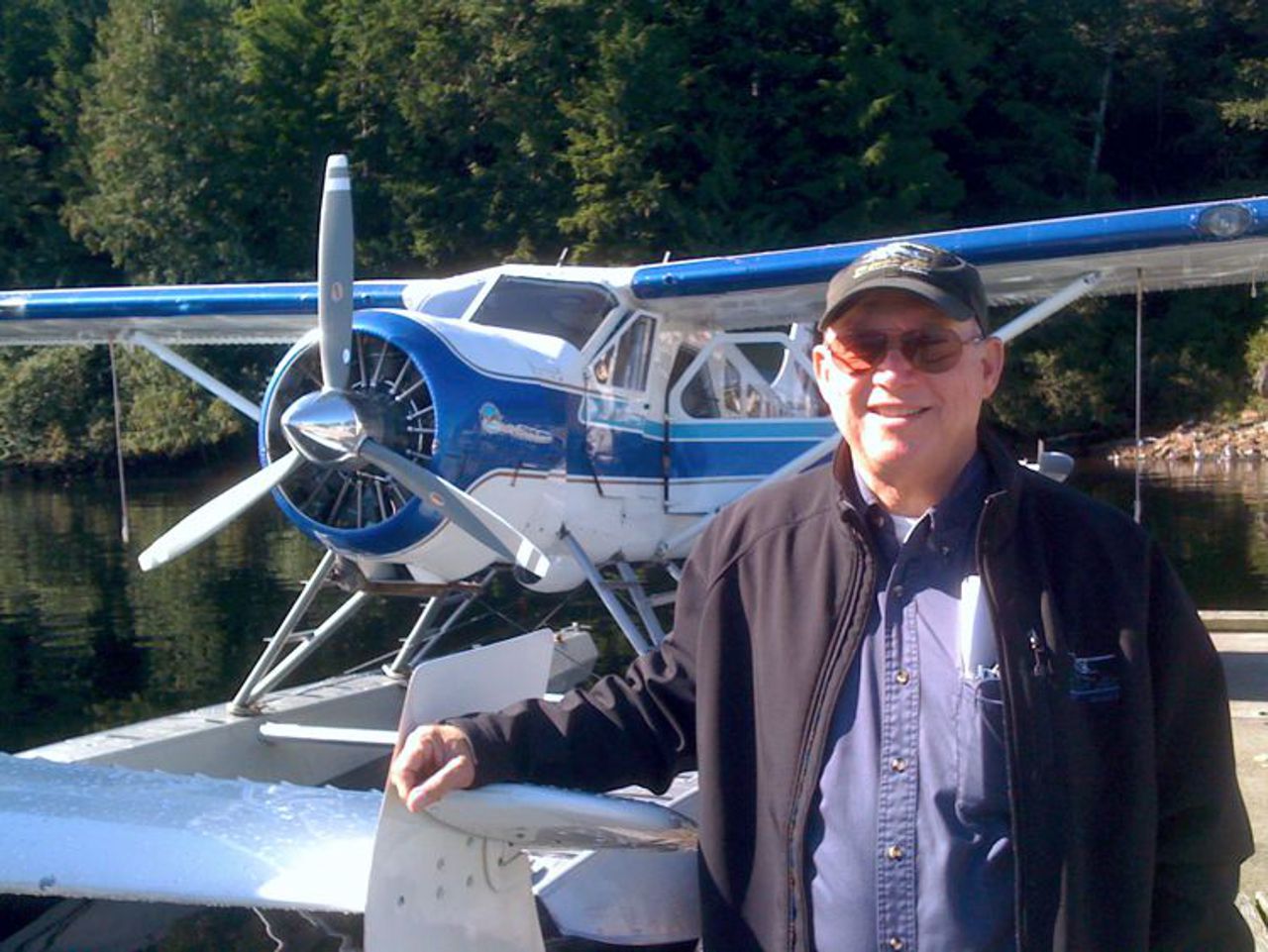 Meet our Newest Instructor
Meet our Newest Instructor
Dan Johnson
Dan is a retired American Airlines pilot and has been flying for the past 53 years. He has accumulated over 26,000 hours of flying, including time as a crop duster, flying airfreight and commuter, and flying float planes in Alaska. You may have seen Dan around the airport. He’s owned several airplanes throughout the 20 years he’s been based at Galt. He currently has two planes, a Rans S7 and a Piper Cub. He provides Light Sport flight instruction for JB Aviation in the Sling 2.
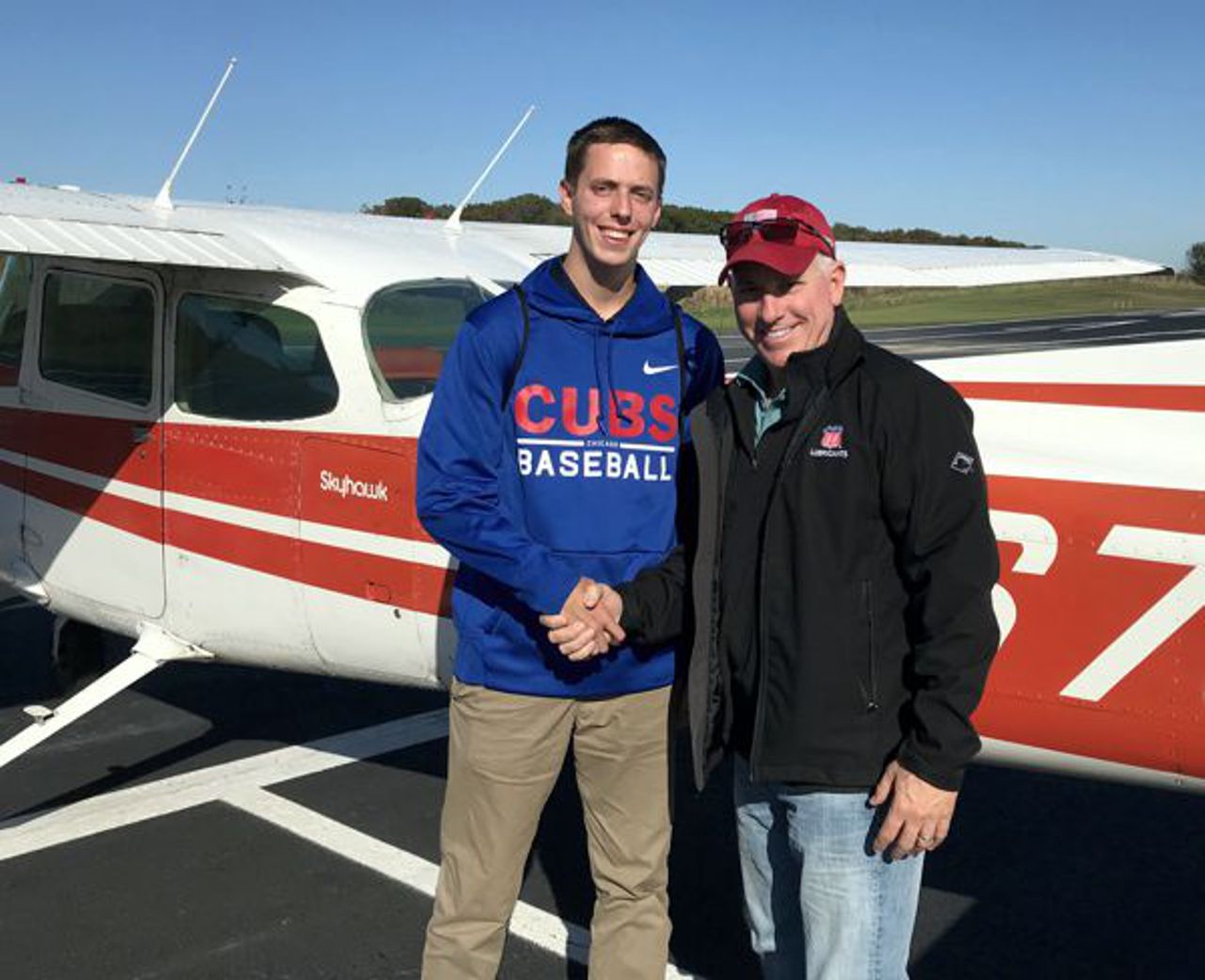 Congratulations to Jake Berge! He earned his private pilot certificate on 10/22/2018.|
Congratulations to Jake Berge! He earned his private pilot certificate on 10/22/2018.|
Pictured with DPE, Dave Monroe on right.
Congratulations to CJ Lerum! He earned his private pilot’s license on 11/10/2018.
Way to go Jake and CJ!
 Congratulations to JB Aviation mechanic, Troy Schlote!
Congratulations to JB Aviation mechanic, Troy Schlote!
He recently earned his Inspection Authorization (IA).

Early this year, I finally got back to pursuing my PPL, a project I began 32 years ago. The changes that have occurred over that time period are enormous. The weather information available on-line is incredible. Heck, when I started, there was no on-line.
What makes no sense are some of the things that haven’t changed. One example is the continued insistence that students learn to read and translate old teletype encoded METARs. Being able to make sense of that gibberish makes me feel as though I’ve gained entry to a secret club. But how does that make me a better pilot?
It also amazes me that a guy in the late 1930s came up with something so indispensable to pilots that it lives on and on and on. I’m talking about the E6B. Its propensity for inaccuracies due to the width of a tic mark or the penciled dot on the wind correction window led generations of pilots to make conservative decisions when planning flights. Ok, that’s not necessarily a bad thing.
However, if you ask pilots when they last used their old whiz wheel, most say, “when I took my written.” I heard about one guy who keeps his on the cocktail table to impress visitors. He admitted that he doesn’t have many visitors. I’m betting he doesn’t have a spouse either.
We now have less expensive and more accurate E6B apps on our smart phones and iPads, but it’s nice to know ground schools are keeping some slide rule manufacturer in business.
Student pilots are still taught to navigate using tools that are artifacts from another century, but that isn’t my point. The real burr under my saddle is that it leaves them to patch together knowledge of EFBs from YouTube videos or to do their own in-flight experimentation. There’s a serious instruction gap!
To those who believe today’s iPads range from an annoyance to an abomination, depending on your level of neo-Luddism, you need to be aware that the FAA gave EFBs their official blessing in Advisory Circular 91-78, eleven years ago. Look it up in your 3-ring binder of ACs from 2007.
Stories about tablets overheating or batteries dying or data not being updated, should be teaching opportunities for CFIs, not reasons to ignore them! Instead, how about teaching a class on cockpit management of portable electronics?
Of course I don’t advocate that we stop learning pilotage and dead-reckoning. Also, knowing what your butt is feeling in the left seat of an airplane is an important skill to have if your airspeed indicator fails. But why is it any less important to teach someone how to manage their iPad information in flight? Let’s get with the program, people!
Incidentally, after I brought up some of these points up during Checkrides and Chili, Mike Nowakowski, the head CFII at JB Aviation’s flight school, informed me that they recently added ForeFlight classes to their syllabus. That conversation led to the feature article this month, titled Bridging the Gap that begins at the of this newsletter. I say, good for you, JBA!
Finally, lest everyone think I’m being a curmudgeon (ok, I am), there are some serious thanks I’d like to offer. First, to my wife, Marie, who keeps me from drifting too far off the centerline. She was happy to see these particular ideas committed to paper ’cause she is mighty tired of hearing me complain about ‘em.
Also, during this past year I have been fortunate to meet a number of interesting people: pilots, CFIs, DPEs, businesses owners, airplane enthusiasts, writers and readers, people with stories to share. Everywhere I turn, there are fascinating folk and friends that I simply hadn’t met before. Thank you all for enriching my life.
It is with great pride that Galt Traffic once again presents…
Planes on Posts
The President’s Page
Greetings EAA 932 Chapter Members!
As I am writing this, we just got walloped with our first substantial snowfall. Welcome back to winter! Sounds like we have the preliminary ingredients for a white Christmas! Despite the cold weather, we’re hoping to keep things warm in the coming months at Chapter 932. Our board has been busy planning for the upcoming year. As we ease into December, please remember that we will not have a regular chapter gathering this month. The holidays are upon us, and I hope that everyone will enjoy some good times with their friends and families.
November in Review
Looking back on November, we had a great month! Our chapter gathering involved hosting an FAA FAASTeam safety seminar entitled “Checkrides and Chili.” I would like to thank FAA Designated Pilot Examiner Dave Monroe for his time talking to us about how to be successful passing an FAA practical test. I’d also like to thank many of our chapter members for preparing some awesome pots of chili. The chili recipes were simply amazing! The seminar itself was well attended, and we learned a lot while enjoying some great food and fellowship afterward.
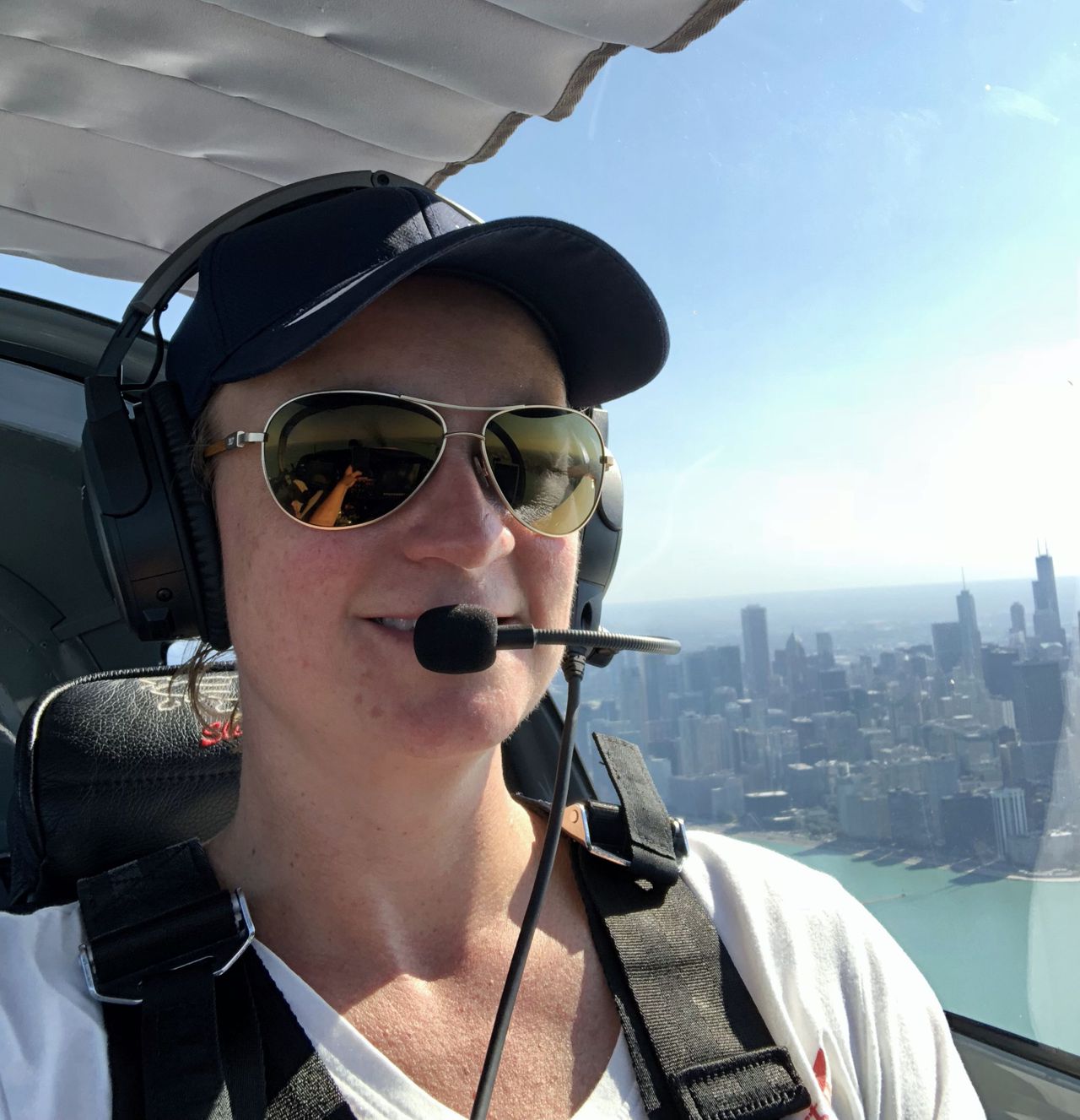 In November, we also held our annual chapter elections. Most of our leadership structure will remain the same, but there have been a few additions. I ran uncontested to continue being your chapter President. Paul Sedlacek will continue to be our Secretary. Daniela Knoll has agreed to serve as our Young Eagles Coordinator.
In November, we also held our annual chapter elections. Most of our leadership structure will remain the same, but there have been a few additions. I ran uncontested to continue being your chapter President. Paul Sedlacek will continue to be our Secretary. Daniela Knoll has agreed to serve as our Young Eagles Coordinator.  Daniela has done a great job in helping us coordinate flights during many of our Young Eagles rallies. Her talent will be much appreciated as we look forward to holding a few Young Eagles Rallies in the coming year. I would also like to welcome two new board members to our chapter. Chapter members Deena Schwartz and Dan Johnson have agreed to step up and contribute to our chapter planning and activities.
Daniela has done a great job in helping us coordinate flights during many of our Young Eagles rallies. Her talent will be much appreciated as we look forward to holding a few Young Eagles Rallies in the coming year. I would also like to welcome two new board members to our chapter. Chapter members Deena Schwartz and Dan Johnson have agreed to step up and contribute to our chapter planning and activities.  Deena will focus on helping us promote chapter activities. Dan will contribute with our overall planning of all chapter activities, and provide input to the board. These folks will be excellent additions to our team dedicated to keeping EAA Chapter 932 running strong. Thanks to all who have volunteered their time to help out.
Deena will focus on helping us promote chapter activities. Dan will contribute with our overall planning of all chapter activities, and provide input to the board. These folks will be excellent additions to our team dedicated to keeping EAA Chapter 932 running strong. Thanks to all who have volunteered their time to help out.
Looking into the New Year
Our first chapter gathering for 2019 will be held on Saturday January 12th. Please note that we will not be meeting at Galt Airport at our normal meeting time. Our January gathering will instead take place at the Rusty Nail Saloon (http://rustynailringwood.com) located in nearby Ringwood, IL between 5:30 to 8:30 pm. We will have a Chapter Social that will include an informal buffet dinner and cash bar! It will be a great excuse to get out and relax in the new year, and enjoy socializing with your fellow chapter members. During the gathering we will also hand out some awards, and share some ideas about plans for the coming year. Final details of the gathering will be announced in mid-December. Meantime, please save the date!
As always, information on all the latest happenings in our chapter can be found on our website at www.eaa932.org. We will be posting information on our Rusty Nail social along with plans for the new year within the next few weeks.
I hope that everyone has a great holiday season. As always, fly safe!
I look forward to seeing everyone in the new year!
Arnie Quast
President, EAA Chapter 932
